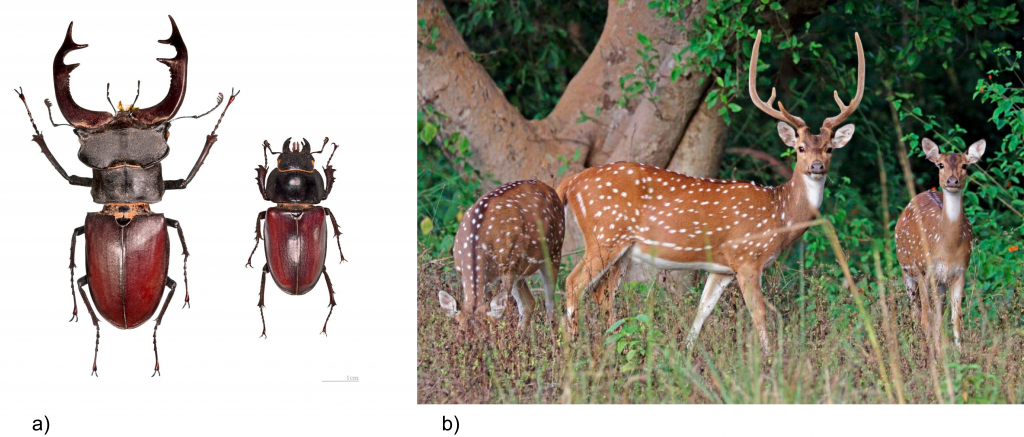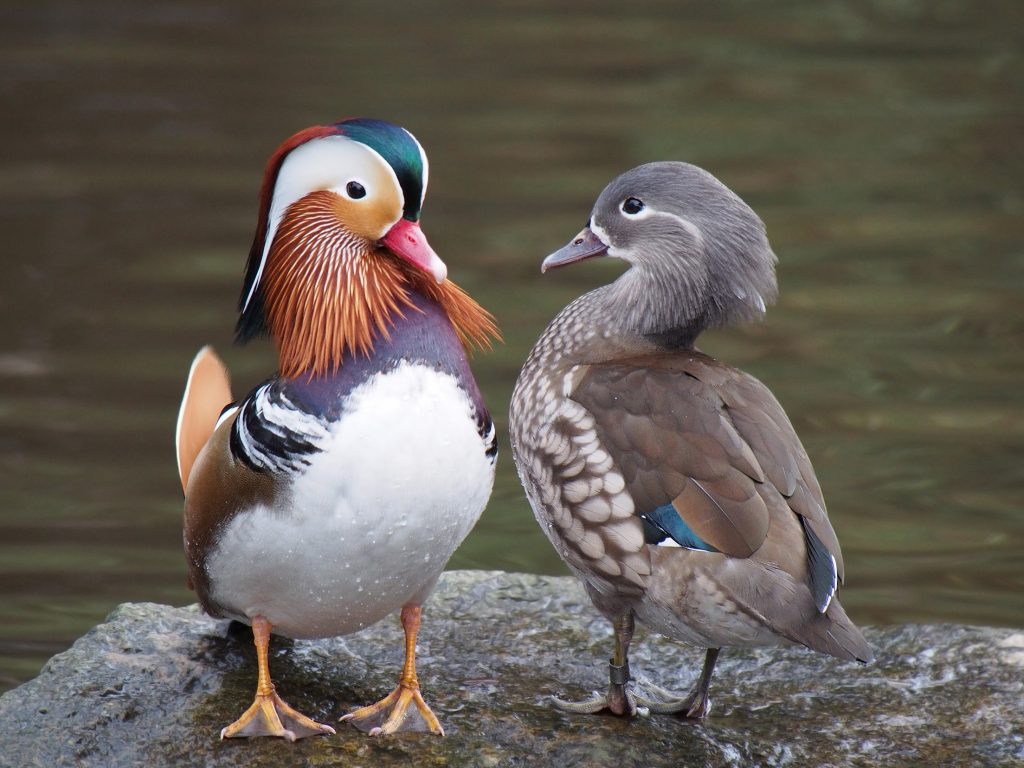10.4 Can we see markers of sexual selection in animals?
Just as with natural selection, sexual selection can lead to changes in the genetic composition of a population that can be seen through physical changes to the way an organism looks. Both mate choice and mate competition can lead to the evolution of elaborate traits, termed secondary sexual traits, because they are not the primary traits involved in sexual reproduction or sperm transfer. Instead these traits aid in the process of sexual reproduction by allowing individuals to gain access to mates. Typically, one sex possesses an elaborate secondary sexual trait or traits, but the other sex does not, a condition called sexual dimorphism. Both mate choice and mate competition can involve the evolution of secondary traits that are sexually dimorphic.


Traits that are subject to selection via mate choice are referred to as ornaments or sexual signals. Ornaments can involve different signal modalities, including visual signals like the bright colors of many birds and butterflies; olfactory (i.e. chemical) signals like the scent patches that many mammal species use to attract mates; auditory signals used by chorusing frogs and some insects like crickets; or even tactile signals like the vibratory signals used by some spiders when they tap their legs on the surface of a leaf to attract mates. Sexual signals can also involve multiple signal modalities. For example, male jumping spiders will often use both visual and vibratory signals when trying to attract females for mating.
Video of jumping spider male signaling to female:

